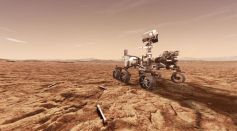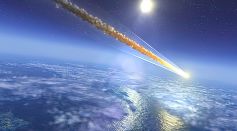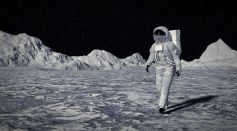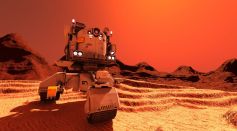SPACE

Intensified Sunspot, Solar Flare to Happening 1-3 Years from Now Could be One of the Most Active Activities of Its Kind

How NASA Mars Rovers Evolved in 25 Years of Exploring the Martian Surface

Space Tragedies: NASA Astronauts Trapped in ‘Gas Cage,’ International Space Station Witnessing 1 Shortest Spacewalk, and More

Blue Origin New Shepard Helps the First Woman to Complete the Explorer’s Extreme Trifecta Go to Space

Scientists to Launch Undersea Expedition to Look for the Interstellar Object That Hit Earth in 2014

First Woman on the Moon: NASA Presents List of Female Astronauts for Its Artemis Mission

Russia Allegedly Spying on US Military After Launching 14F150 Nivelir Spacecraft as Part of Kosmos-2558 Mission

French Scientist Uses a Photo of Spanish Chorizo and Jokes About James Webb Space Telescope Finding a Red Giant Star in Another Planet

NASA Human Mission to Mars Due to Belief That Red Planet Is Habitable Like Earth, May Not Be Achievable Before 2035

SpaceX Falcon 9 Launches South Korea's First Direct Mission to Moon From Cape Canaveral Space Force Station
Neutron Star Caught Smashing Into Its Neighboring Stellar; Here’s What Astronomers Reveal

Jared Isaacman Announces SpaceX Polaris Dawn Launch Date
Green Meteors Blasting Through the Skies; Why Are They Common in New Zealand?

US Spy Satellite Launched on Mystery Mission 2 Days Later Than Originally Planned
Most Popular

Microplastics Are Everywhere — How Plastic Pollution Threatens Wildlife, Soil, and Water

Brain Health Aging Guide: Effective Strategies for Cognitive Decline Prevention and Lower Dementia Risk

Mitochondrial Health and Aging: How Cell Energy Drives Modern Anti-Aging Science

How Scientists Use Radio Telescopes to Search for Alien Signals Across the Universe





